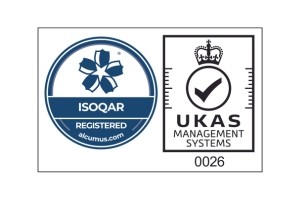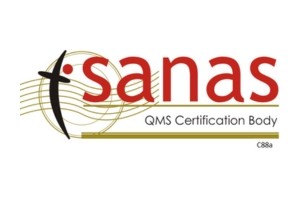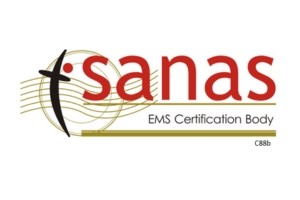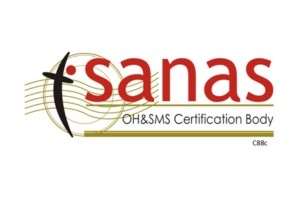There are six (6) implementable clauses within ISO 45001:2018
Occupational Health and Safety Management Standard.
ISO 14001:2015 Environmental Management Systems – requirements with guidance for use
An organization may want to improve its environmental performance but find it difficult to do so in an efficient and effective manner. ISO 14001:2015 is a recognized method for identifying and addressing environmental performance. With over 300,000 certifications issued across 171 countries, the standard is the most widely adopted environmental management system worldwide.
There are a number of reasons why an organisation chooses to implement an environmental management system. These reasons include:
- To demonstrate management commitment;
- Responding to pressure from interested parties (stakeholders);
- Acting in a socially responsible manner;
- Reducing the risk of prosecution;
- To meet regulatory requirements including permits.
This series of blogs aims to assist you to understand the requirements of ISO 14001:2015.

Clause 5.0 Leadership
ISO 14001:2015 Leadership establishes clear expectations for top management. Not only are executives accountable for the effectiveness of these respective systems, they also have specific tasks ranging from establishing objectives to supporting relevant managers in their roles. It require that managers integrate requirements into the organization’s business process. These managers will need to focus on the planning process to ensure that these systems meet the intended outcomes, as well as to establish performance objectives. For those implementing an environmental management system (EMS), ISO 14001 expects the organization not only to include the prevention of pollution, but also protection of the environment.
This requires top management to learn and understand what the standard means when it says “protect the environment.” Topics such as sustainability, climate change mitigation, and protection of biodiversity and ecosystems are suggested by the standard in a note. The standard states that top management must take accountability for the “effectiveness of the EMS.” This one statement sets the tone for the whole of Section 5. No longer is there specific mention of a “management representative” in terms of taking responsibility, although specific responsibilities for other tasks may be delegated to the management representative elsewhere in the EMS. Given that top management will now be held responsible for the system’s effectiveness, it stands to reason that when this is broken down, then the following aspects must also be displayed by top managers under audit conditions:
- Ensuring that the strategic plans of the organization and the EMS objectives are compatible and integrated, and within the scope of the organizational context;
- Ensuring the correct resources are available and that the EMS can interact with the existing business processes;
- Adopting responsibility for delegating and directing people to ensure performance objectives are met;
- Ensuring continual improvement can be achieved;
- Providing leadership to other supporting roles in the organization to ensure overall targets can be met.
5.1: Leadership and Commitment
Leadership, commitment and active support from top management are critical for the success of your environmental management system and for the achievement of its intended outcomes.
If employees observe top management taking environmental responsibility seriously this will greatly assist in the establishment of a positive environmental culture throughout the organisation.
Leadership and commitment can be shown by:
- Aligning the environmental management system with the organisation’s business objectives;
- Ensuring the necessary resources are available;
- Encouraging employees and other relevant interested parties to become actively involved in improving environmental performance;
- Involving everyone in environmental decisions that affects them;
- Promoting open discussion about environmental matters.
The organisation can improve the environmental culture, by:
- Providing clear and consistent leadership;
- Promoting formal and informal involvement of employees;
Top management should communicate the importance of effective environmental management and conformance to environmental management system requirements by direct involvement or through delegation of authority, as appropriate.
This communication can be formal or informal.
Top management should support others in the organisation in relevant managerial roles so that they in turn can demonstrate leadership in their own area of responsibility. Through this means, top management’s leadership and commitment cascades down through the organisation. By demonstrating leadership and commitment, top management can direct and support employees of the organisation and others doing work on its behalf to achieve the intended outcomes of its environmental management system.

The organisation is in a better position to achieve its environmental objectives and to identify opportunities for improvement when top management creates a culture that encourages people at all levels to actively participate in the environmental management system.
5.2: Environmental policy
The environmental policy is the mechanism by which top management formally expresses its commitment to improving its environment performance.
As a minimum, these commitments are required:
- The environmental policy is appropriate to the purpose and context of the organization, including the nature, scale and environmental impacts of its activities, products and services;
- Provides a framework for setting environmental objectives;
- Includes a commitment to the protection of the environment, including prevention of pollution and other specific requirements relevant to the context of the organization;
- Include a commitment to fulfill compliance obligations;
- Include a commitment to continual improvement of the environmental management system to enhance environmental performance.
It is important to share the organization’s commitments with its employees, contractors and others who work on behalf of the organization so that they understand top managements’ expectations and can perform their work in a manner that contributes to meeting these expectations. Making the environmental policy publicly available, or available on request, provides assurance to interested parties that the organization is doing its part to achieve positive environmental outcomes.
The environmental policy should be reviewed periodically to ensure that it remains relevant and appropriate to the organization.

5.3: Organizational roles, responsibilities and authorities
Top management should ensure that the responsibilities and authorities for relevant roles within the environmental management system are assigned and communicated at all levels within the organization and maintained as documented information.
Top management is ultimately responsible for the environmental management system, even if the day-to-day decisions related to environmental performance are delegated to others. What is delegated and to whom, should be clearly and unambiguously communicated so that everyone understands who is responsible for what.
Top management should assign the responsibility and authority for:
- Ensuring that the environmental management system conforms to the requirements of ISO 14001;
- Reporting on the performance of the environmental management system to top management.
Since resources can be limited, opportunities should be sought out to integrate environmental responsibilities within existing functions of the organization. If other management systems are already in place, such as OH&S, quality or energy, synergies may exist where there are similar roles and responsibilities. This will enhance ownership of environmental management across the organization and potentially create efficiencies.
ISO 14001 requires that the responsibilities and authority of all persons who perform duties that are part of the environmental management system be documented. These can be described and included in:
- Environmental management system procedures;
- Operational procedures and process maps;
- Project and/or task descriptions;
- Job descriptions;
- Induction training packages.
Such documentation can, among others, be required for the following personnel:
- Management at all levels in the organization, including top management;
- Environmental committees/environmental teams;
- Process operators and the general workforce;
- Those managing contractors;
- Those responsible for environmental training;
- Those responsible for equipment operation and maintenance;
- Those responsible for facilities management;
- Employees with environmental qualifications or other Environmental specialists within the organization.
Care should be taken with the clarification of responsibilities at the interfaces between different functions (e.g. between departments, between different levels of management, between employees, between the organization and contractors and between the organization and its neighbors).
Join our mailing list to receive upcoming posts: http://www.isoqar.co.za/





